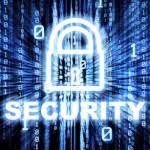Cybersecurity Experts Warn Parents After PowerSchool Data Breach Protecting Student Information.
In a world increasingly reliant on digital platforms for education, cybersecurity breaches pose significant risks, particularly when they involve sensitive student data. Recently, classrooms across Alberta have faced a troubling incident involving a data breach connected to PowerSchool, a widely used educational information system. Cybersecurity experts are sounding the alarm, urging parents to remain vigilant and take proactive measures to protect their children’s personal information.
Understanding the PowerSchool Data Breach
PowerSchool is a comprehensive software platform utilized by numerous school districts for managing student data, including grades, attendance, and personal information. This recent breach has raised significant concerns, as it compromises the privacy and security of students’ sensitive information. Although specific details about the extent of the breach have yet to be disclosed, the implications can be far-reaching. Hackers can exploit this information for identity theft, phishing scams, and other malicious activities.
The Importance of Vigilance
Cybersecurity experts emphasize that parents play a crucial role in safeguarding their children’s information in light of this breach. With the increasing digitization of education, students’ personal data is more vulnerable than ever. Here are some important steps parents should consider:
1. Stay Informed: Parents should remain updated on the situation as it unfolds. School districts may provide updates regarding the breach, including what data may have been compromised and what steps are being taken to mitigate the situation.
2. Monitor Accounts: Parents should encourage their children to monitor their online accounts for any unusual activity. This includes checking email accounts, social media profiles, and even online banking for any signs of unauthorized access.
3. Strengthen Passwords: A strong password is a fundamental line of defense against cyber threats. Parents should assist their children in creating complex, unique passwords for their accounts and encourage them to use two-factor authentication whenever possible.
4. Educate About Phishing: Children are often the target of phishing scams, where attackers impersonate legitimate sources to steal personal information. Teaching children how to recognize suspicious emails or messages is crucial. They should understand the importance of not clicking on links from unknown sources and verifying requests for information.
5. Limit Sharing of Personal Information: Parents should discuss with their children the importance of keeping personal information private. This includes avoiding oversharing on social media platforms and being cautious about the information they provide to apps and websites.
Schools Responsibility
In addition to parental vigilance, schools also have a critical responsibility in the wake of this breach. Educational institutions must prioritize cybersecurity measures to protect their students’ data. This includes regular security audits, staff training on data protection protocols, and transparent communication with parents regarding the steps being taken to secure student information.
The Future of Educational Technology
As technology continues to advance and integrate into education, the potential for data breaches remains a significant concern. Schools, parents, and cybersecurity experts must work collaboratively to ensure that students’ information is kept safe. This may involve advocating for stronger regulations around data protection in educational technology and fostering a culture of cybersecurity awareness within the school community.
Conclusion
The recent PowerSchool data breach serves as a wake-up call for parents and educational institutions alike. As cyber threats continue to evolve, so too must our strategies for protecting our children’s information. By remaining informed and proactive, parents can play a vital role in shielding their children from the potential fallout of data breaches and ensuring a safer digital environment for all students.








